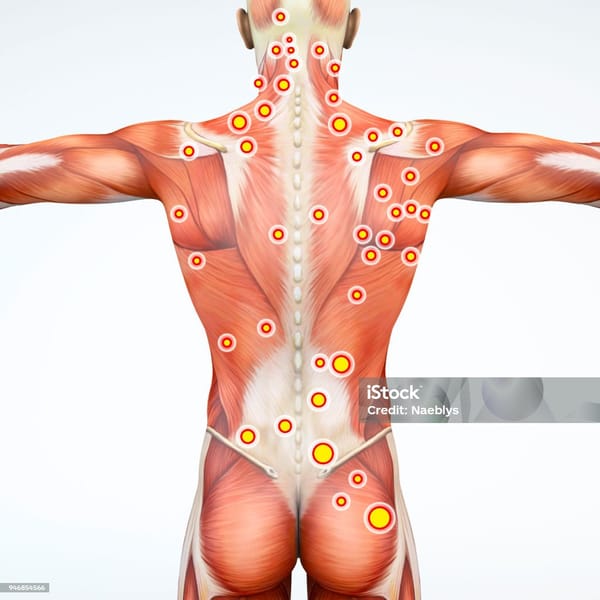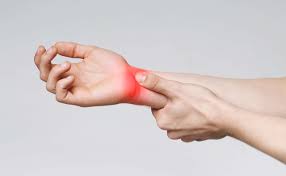
Understanding Referring Pain: How the Iler Method® Provides Comprehensive Relief
Recognizing these signs allows our massage therapists to effectively tackle the root cause of pain and discomfort.
Think of referring pain like a warning light on your car’s dashboard. Just as that light indicates something is wrong under the hood, referring to pain signals an issue elsewhere in your body, not necessarily where you feel the pain. Understanding these signals is crucial for effective treatment. In this blog post, we'll explore how the Iler Method® identifies and treats referring pain, helping you achieve long-lasting relief without needing oil or lotions.
Recognize the Signs of Referring Pain (No Oil Needed!)
Referred pain is often felt as a shooting or nerve-like sensation when pressure is applied to a muscle that is not functioning correctly. This pain indicates dysfunction in the area, as the body's natural response to such issues includes signaling pain to different places. Pressing on an area and experiencing referred pain suggests insufficient space for nerves to function correctly.
The Iler Method uses a specialized form of trigger point therapy that doesn't require oil or lotion. This approach allows therapists to precisely locate and treat trigger points and adhesions, which are the primary sources of referring pain. By incorporating related techniques and thorough assessments, the Iler Method ensures effective and targeted treatments.

This precise approach helps sports massage therapists effectively identify and address the specific areas causing the most discomfort. By focusing on trigger points and adhesions, this method provides a targeted solution for managing referring pain. The therapy's initial goal is to reduce muscle tension and alleviate pain. Plus, since no oil means clients don't need to shower afterward, fitting a massage appointment into their daily activities is easier.
Why Understanding Referring Pain Matters
Understanding referring pain is essential because it signals a blockage in the area, which can impede nerve messages, blood flow, hormones, and healing chemicals. Recognizing these signs allows our massage therapists to effectively tackle the root cause of pain and discomfort.
The Iler Method aims to open up these pathways, ensuring that the affected body parts receive proper circulation and healing agents. When these pathways are blocked, it can lead to prolonged pain and discomfort, making effective treatment crucial for relief.
Therapists can significantly reduce specific discomforts such as muscle tightness, joint pain, and chronic pain by identifying and treating referring pain. By using enough pressure to cause good pain—when it is uncomfortable but feels productive—they can effectively address the root cause of this pain.
Addressing these issues alleviates immediate discomfort and helps prevent future occurrences, promoting long-term muscular, neural, and general health. The Iler Method Therapy Program offers treatments that comprehensively address these health issues.

Common Misconceptions About Referring Pain
Exploring common misunderstandings about referring pain can help readers understand how it works and why it occurs. Here are nine common misconceptions:
- Referring Pain is Always Immediate: Some believe that referring pain occurs after pressure is applied, but it can sometimes take a moment to manifest.
- Referring Pain Indicates the Source of the Problem: Many think the pain is the source of the problem, but referring pain often appears in different areas away from the actual issue.
- It Only Happens with Deep Pressure: Pain can occur with various levels of pressure, not just deep pressure.
- Referring Pain is Consistent in Location: People assume referring pain always affects the same area, but it can vary depending on the trigger points involved.
- Only Specific Muscles Cause Referring Pain: Any muscle with trigger points can cause referring pain, not just a specific group of muscles.
- Referring Pain is a Sign of Nerve Damage: While it involves nerves, referring pain does not indicate nerve damage.
- It Can be Easily Self-Diagnosed: Identifying referring pain accurately requires professional assessment, as it can mimic other conditions.
- Massage Always Relieves Referring Pain: While massage can help, not all types of massage are effective for referring to pain; specialized techniques like the Iler Method® are.
- Referring Pain and Referred Pain are Different: Some believe a significant difference exists between referring and referred pain, but they are essentially the same phenomenon.
How the Iler Method Effectively Treats Referring Pain
When referred pain travels towards the body's center, it indicates a significant blockage, requiring more time to alleviate the pain and discomfort. Iler Method therapists start treatment closer to the body to target the source of the blockage, applying the ideal pressure for effective relief.
Conversely, when pain refers away from the body, it is typically a normal response and can often be resolved more quickly. Therapists focus on opening the pathway from the referred pain area to the source, facilitating effective treatment through clinical massage techniques.

This method prioritizes the most heavily blocked areas, providing comprehensive care and a thorough approach to pain relief. Working systematically, the Iler Method helps clients experience significant relief from referring pain. This approach is successful based on the treatment of thousands of clients and a deep understanding of each individual's unique needs and wellness goals.
Why a Bright Room Enhances Your Treatment
The goal of the Iler Method is pain relief, not relaxation, so there's no need to be in a dimly lit room. The therapist stays more alert and attuned to the clients, and the clients remain more awake and attuned to their bodies, providing critical feedback to the therapist. Heightened awareness helps ensure that treatment is as effective as possible.

By maintaining a well-lit environment, both the therapist and the client can focus better on the treatment process, improving the overall efficacy of the sessions. This approach underscores the Iler Method's commitment to addressing pain and discomfort directly through comprehensive treatment and manual therapy techniques.
A bright room enables therapists to perform a detailed evaluation of the affected muscle, ensuring the client's needs are well taken care of.
The Role of Communication in Iler Method® Sessions
Communication is vital during Iler Method sessions, so we don't use music. Unlike other therapies, which focus on relaxation, the Iler Method treats muscle and joint pain and aids in recovery from sports injuries.
Clear communication ensures therapists can provide effective, targeted treatment and adjust their techniques based on client feedback. This open dialogue helps therapists understand the client's needs and tailor the therapy accordingly.

No music creates an environment more conducive to sharing, teaching, and communication between therapist and client, facilitating a balanced state.
Clients wear comfortable clothing, allowing them to move freely and feel less vulnerable, enhancing the overall effectiveness of the therapy. This unique approach fosters a collaborative environment, ensuring good pain for effective treatment outcomes. Additionally, eliminating the top sheet reduces linen usage, saving time and adding it to a client's treatment while conserving natural resources.
Final Thoughts About Referred Pain
Understanding and effectively treating referring pain is essential for long-term relief and well-being. The Iler Method uses a specialized sports massage approach that avoids oil and lotion, allowing therapists to target and alleviate the root causes of pain precisely. Opening pathways and ensuring proper circulation helps reduce muscle tightness, joint pain, and other discomforts, promoting long-term muscular and neural health.
Clear communication between therapist and client is vital for the success of the Iler Method. By eliminating distractions such as music and encouraging clients to wear comfortable clothing, therapy sessions become more effective and tailored to individual needs. This approach fosters a collaborative environment that enhances the benefits of each session and ensures the best possible outcomes for clients.
The Iler Method provides a comprehensive approach to understanding and treating referring pain. Therapists and clients work together to address pain and discomfort by utilizing a well-lit environment and direct communication. This method's focus on precision and individualized care aims to deliver lasting relief and improve the quality of life for those experiencing referring pain.
Disclaimer: Please note that at Iler Method® Therapy, we specialize in massage therapy and related techniques. All clients must understand that we are not medical professionals, and our services should not be seen as a substitute for medical advice, diagnosis, or treatment. Our practices are designed to support and complement your overall health, but they do not replace professional medical consultation when needed.





